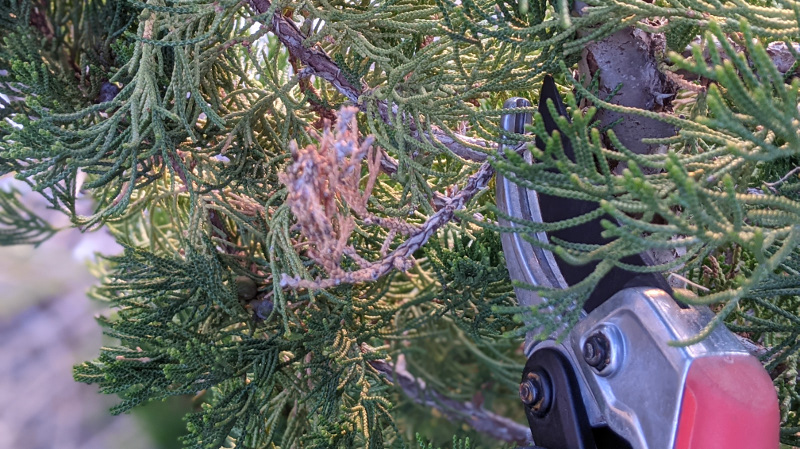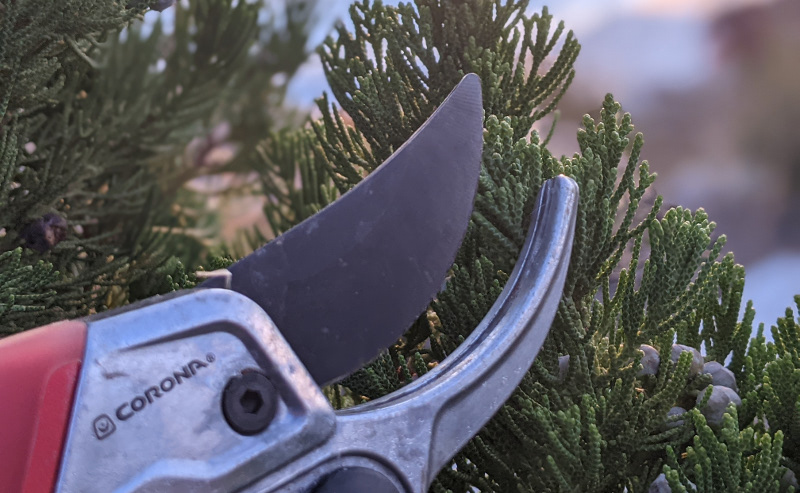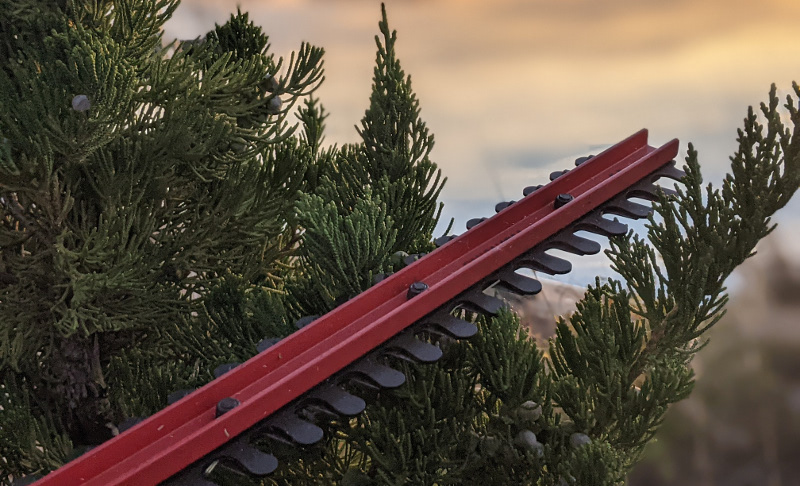Junipers need little to no pruning. Over-pruning will destroy their lovely natural shape and may lead to unattractive bare spots in the center of the plant. Remove or cut back damaged and dead branches.

When to Prune Juniper
The best time to prune juniper is before new growth begins in late winter or early spring. Aside from removing dead or damaged limbs, only prune if a juniper has become oddly shaped or you want to limit its size. Never prune away more than a quarter of the plant. Junipers grow slowly, so trim lightly. Make minor cuts and step back to review the results. If you prune off too much, it will take years to regrow.
Lightly prune overgrown junipers along their edges if you want to maintain a crisp edge. Don’t prune back branches to older needle-less wood. Only shear a juniper if you are trimming it into a topiary shape. Shearing will promote a flush of dense outer growth that will block sunlight from reaching the plant's interior.

How to Prune Juniper
Step 1 - Remove damaged and dead stems.
Use pruners or a saw to cut back broken and dead stems to the ground or the main trunk.
Step 2 - Cut to encourage bushier growth if desired
Cut branches above a bud. You can determine where buds are located by looking for the spot where a leaf grows out of the wood.
Step 3 - Remove bushy growth.
Remove branches in areas that have become too thick. Cut a few stems back to the trunk or the ground. Cut a single limb and step back to inspect your shrub. Go slowly to prevent creating bare spots.
Why Prune Juniper
Prune junipers if they have more than one central stem or leader. Prune away the one that is the most crooked or weakest. Do this when the shrub is young. If you have limited space, prune the tips of each branch to keep the plant compact.
Juniper Pruning Tips
- Do not prune back to bare wood.
- Remove surplus central leaders.
- Never prune away more than a quarter of the plant.
- Don’t sheer your juniper using hedge trimmers (image below)

 |
Author Erica Browne Grivas - Published 11-15-2021 |
